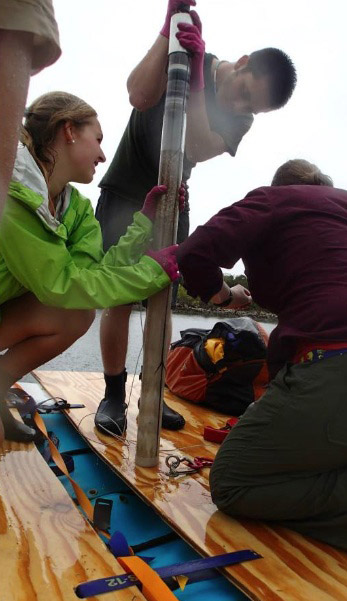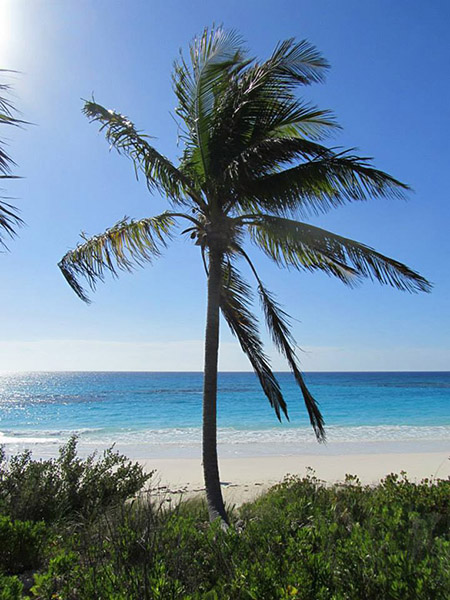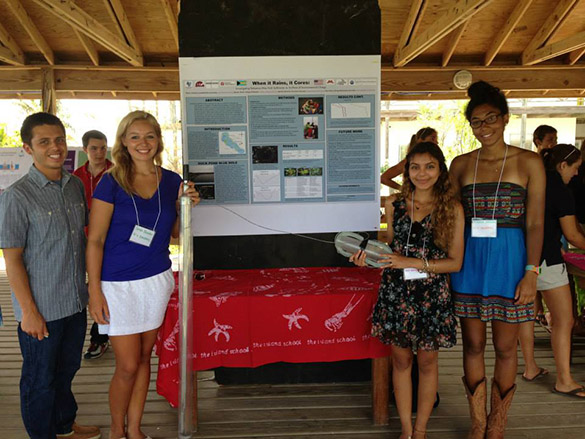 These large brachiopods are of the species Terebratula maugerii Boni, 1933. They were found in Upper Miocene (Tortonian-Messinian) beds near Cordoba, Spain. Wooster acquired them through a generous exchange of brachiopods with Mr. Clive Champion in England.
These large brachiopods are of the species Terebratula maugerii Boni, 1933. They were found in Upper Miocene (Tortonian-Messinian) beds near Cordoba, Spain. Wooster acquired them through a generous exchange of brachiopods with Mr. Clive Champion in England.
The specimen on the left is oriented with the dorsal valve upwards. The ventral valve is below and visible at the top of the image. The ventral valve of terebratulids has a rounded opening through which the attaching device, called the pedicle, extended. The specimen on the right is shown with its ventral valve upwards. Since this is the largest valve, you can’t see the dorsal valve below.
I like these specimens because they have that beautiful fold in the center of the shell. This is much more pronounced than in the usual terebratulid brachiopod (it is said to be “strongly plicated“), so students get to see some variety in this large but generally uniform group.
By the Cenozoic, brachiopods are rather rare in fossiliferous deposits. Shelly beds from the Paleocene on are dominated by mollusks, especially bivalves. This large brachiopod, though, is an exception found in the Upper Miocene shellbeds of southern Spain. It is found in meter-thick accumulations, making it for a very short time a significant carbonate component in marine sediments. Terebratula maugerii was most common in the deep subtidal in high-energy deposits. (See Reolid et al., 2012, for details.)
 Finally, brachiopods are commonly called “lamp shells“, which makes no sense to most modern students. They were given this nickname way back in the 18th century because of their resemblance to Roman oil lamps, such as those figured above in the same orientation as our shells. These were filled with oil through the central hole and a wick was placed in what we now see as the “pedicle opening”. It is an archaic comparison, but it works!
Finally, brachiopods are commonly called “lamp shells“, which makes no sense to most modern students. They were given this nickname way back in the 18th century because of their resemblance to Roman oil lamps, such as those figured above in the same orientation as our shells. These were filled with oil through the central hole and a wick was placed in what we now see as the “pedicle opening”. It is an archaic comparison, but it works!
References:
Boni, A. 1933. Fossili miocenici del Monte Vallassa. Bolletino della Società Geologica Italiana 52: 73-156.
García Ramos, D.A. 2006. Nota sobre Terebratulinae del Terciario de Europa y su relación con los representantes neógenos del sureste español. Boletín de la Asociación Cultural Paleontológica Murciana 5: 23-83.
Llompart, C. and Calzada, S. 1982. Braquio ́podos messinienses de la isla de Menorca. Bol R Soc Espanola Hist Nat 80: 185–206.
Reolid, M., García-García, F., Tomasovych, A. and Soria, J.M. 2012. Thick brachiopod shell concentrations from prodelta and siliciclastic ramp in a Tortonian Atlantic–Mediterranean strait (Miocene, Guadix Basin, southern Spain). Facies 58: 549-571.
Toscano-Grande, A., García-Ramos, D., Ruiz-Muñoz, F., González-Regalado, M.L., Abad, M., Civis-Llovera, J., González-Delgado, J.A., Rico-García, A., Martínez-Chacón, M.L., García, E.X. and Pendón-Martín, J.G. 2010. Braquiópodos neógenos del suroeste de la depresión del Guadalquivir (sur de España). Revista Mexicana de Ciencias Geológicas 27: 254-263.





































